The post Help Your Cat Exercise by Jackie Brown appeared first on Catster. Copying over entire articles infringes on copyright laws. You may not be aware of it, but all of these articles were assigned, contracted and paid for, so they aren't considered public domain. However, we appreciate that you like the article and would love it if you continued sharing just the first paragraph of an article, then linking out to the rest of the piece on Catster.com.
Everyone knows of the lazy cat stereotype, but in reality cats aren’t supposed to lie around all the time. In fact, cats who live strictly indoors are often far too sedentary.
“We’ve come to realize that cats kept exclusively indoors often don’t get enough mental or physical stimulation,” says Dr. Terri A. Derr, founder of Veterinary Behavior Options, servicing Minnesota’s Twin Cities metro area. “Unowned cats, especially those not part of a feeding colony, have to hunt prey to eat. They must also avoid predators. Indoor cats don’t do either of those things.”
Keeping your cat indoors is safer than letting him roam. So, it’s up to you to make your home as stimulating as possible for your kitty and to encourage your cat to exercise.
“When cats lose the ability to perform their natural hunt, catch, play, eat cycle they can become depressed,” says Dr. Liz Bales, writer, speaker and a featured pet expert on Fox and Friends and ABC News. “As cats age, they play less, and if we don’t engage in active play with them, they may not play much at all.”
Dr. Colleen Sawyer with Rolesville Veterinary Hospital in Rolesville, North Carolina, reminds us that exercise is good for your cat’s body, too. “It decreases the risk of diabetes, urinary tract problems, matted hair and joint-related disease,” she says.
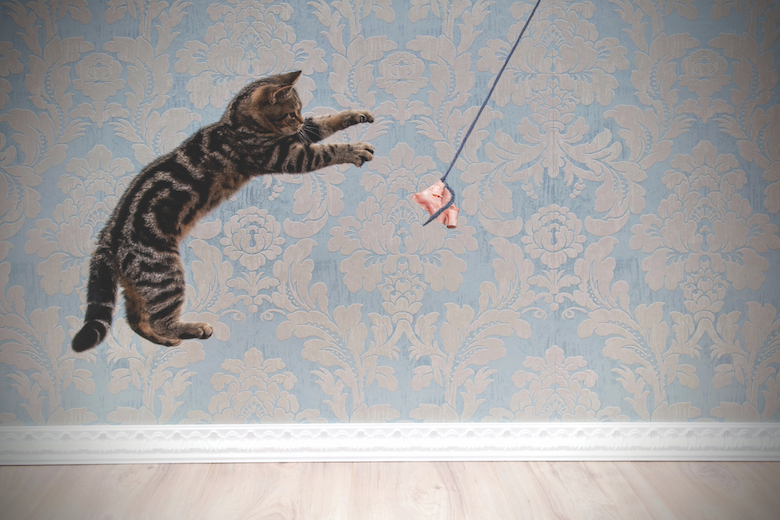
Photo: Umkehrer | Getty Images
How do you get your cat to be more active? Exercise some of the following options:
Help your cat exercise with play
Aim for at least two five- to 15-minute play sessions every day.
“My cats’ favorite is their fishing pole toys,” says Dr. Bales, founder of Doc and Phoebe’s Cat Company. “This is great for your relationship and to get them to move. Don’t forget to allow them to catch their prey and then give them a small treat. This hunt, catch, play cycle allows them to relax instead of staying in hunting mode.”
Dr. Bales also points out that some cats really enjoy a running wheel, which is like a giant hamster wheel for cats. “This can be a great outlet if your cat will use it,” she says.
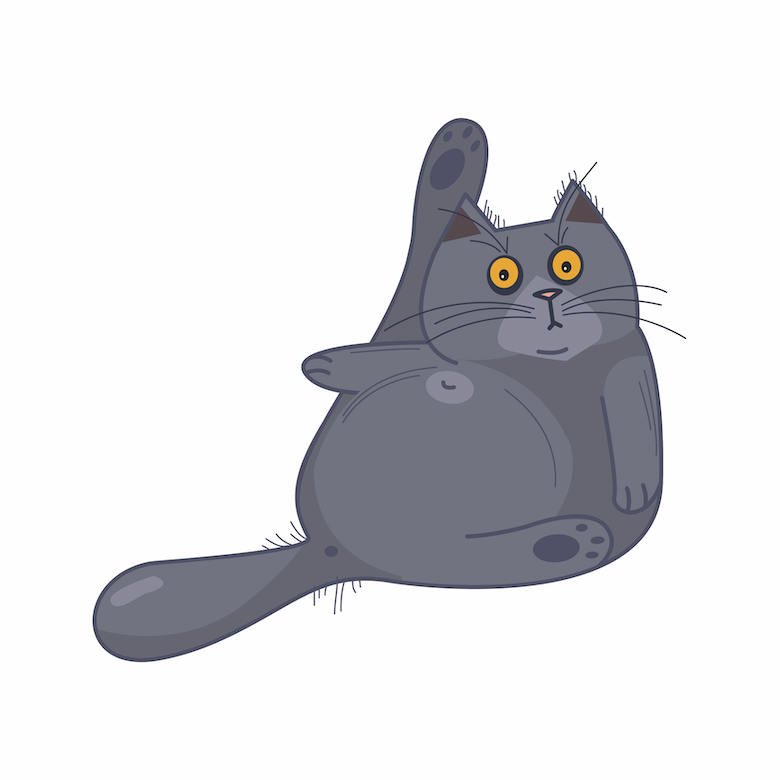
Why is kitty so lazy?
According to Dr. Sawyer, lots of things can make a cat less active in addition to being overweight, including boredom, lack of environmental stimuli and pain related to osteoarthritis. Dr. Sawyer recommends bringing your cat in for regular checkups with your veterinarian to rule out a medical reason for his inactivity.
“Addressing any back or hip pain can greatly improve a cat’s quality of life and result in them being more active again,” says Dr. Sawyer, who recently examined a 3-year-old cat brought in because she was sleeping more and had an increased breathing rate. “It turns out that she had heart disease,” she says. “Once we started her on medication, she was feeling so much better, running around and playing with her housemate.”
You might be surprised to find out that being spayed or neutered is not generally the cause of a cat’s idleness.
“Spaying and neutering on its own does not necessarily cause lethargy,” says pet expert Dr. Liz Bales . “However, spaying and neutering can decrease the caloric needs up to 30%. Most people don’t appreciate this change and continue to feed too much food, which leads to weight gain, and that leads to lethargy.”
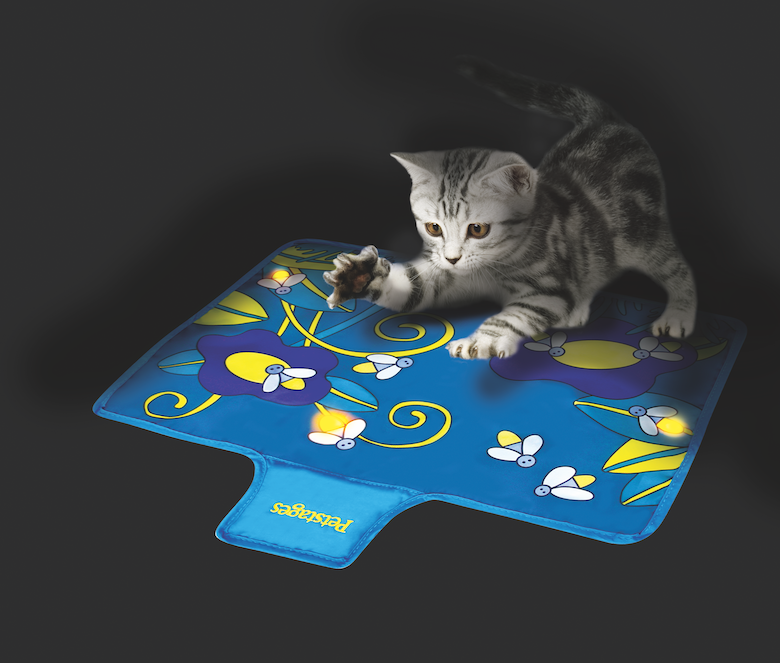
Engage kitty in play with the Flashing Firefly Mat ($21.99) from Petstages; petstages.outwardhound.com
What you should feed a less active cat
To prevent weight gain, less-active cats may benefit from eating certain types of foods with fewer calories. “Avoid anything that is labeled for ‘all life stages’ as this has enough calories to support young growing kittens and lactating mothers (queens),” Dr. Sawyer says. “This often causes excessive weight gain in our indoor-only, less active adult cats. It is worth having a discussion with your vet for your cat’s specific needs.”
Your veterinarian might recommend a food that’s labeled for adult maintenance or one of the many foods intended for less-active cats, such as those labeled for indoor-only cats or weight management. Examples are: BIORoyal Canin Veterinary Diet Satiety Support Dry/Wet Food ($42.99) and Purina One Indoor Advantage ($24.99), both available at Chewy.com and other pet retailers.
According to Dr. Bales, the type of food is less important than the overall calories; the average indoor cat who isn’t overweight needs about 250 calories per day. “I really like science-based foods that have lifetime studies about how to manage decreasing the calories and still providing all the essential nutrients,” she says. “A weight management diet will have the nutrients adjusted for this decreased overall volume and calorie limit.”
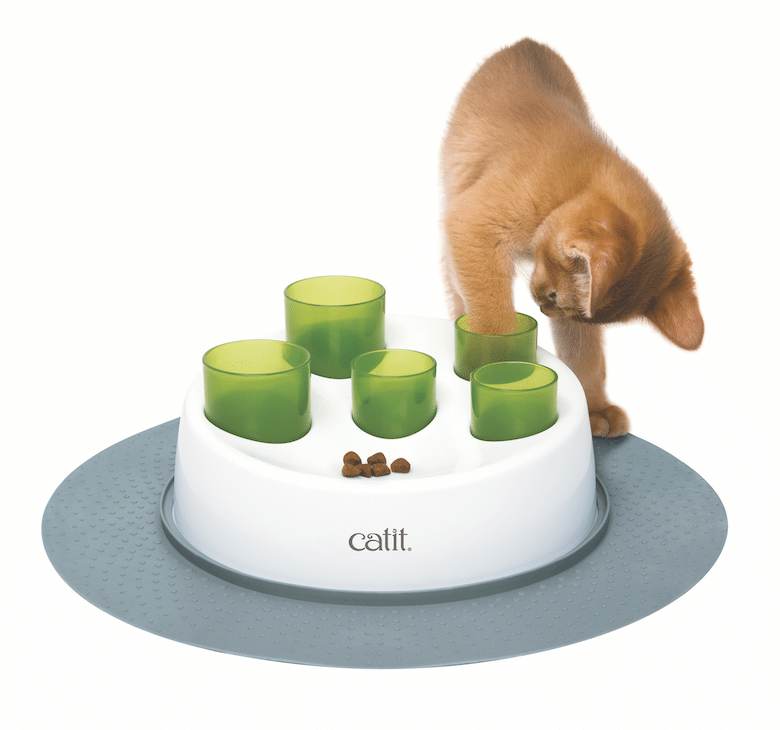
Motivate your cat to hunt the Catit Senses 2.0 Digger ($14.99); usa.catit.com
Tips to motivate cat exercise with play:
- Toss a ball or mouse to chase. Swing a feather or toy attached to a cat fishing pole toy.
- Shine the laser pointer on the ground or furniture (just never in the eyes) or use a toy with flashing lights for kitty to pounce on.
- Get your cat a feline running wheel.
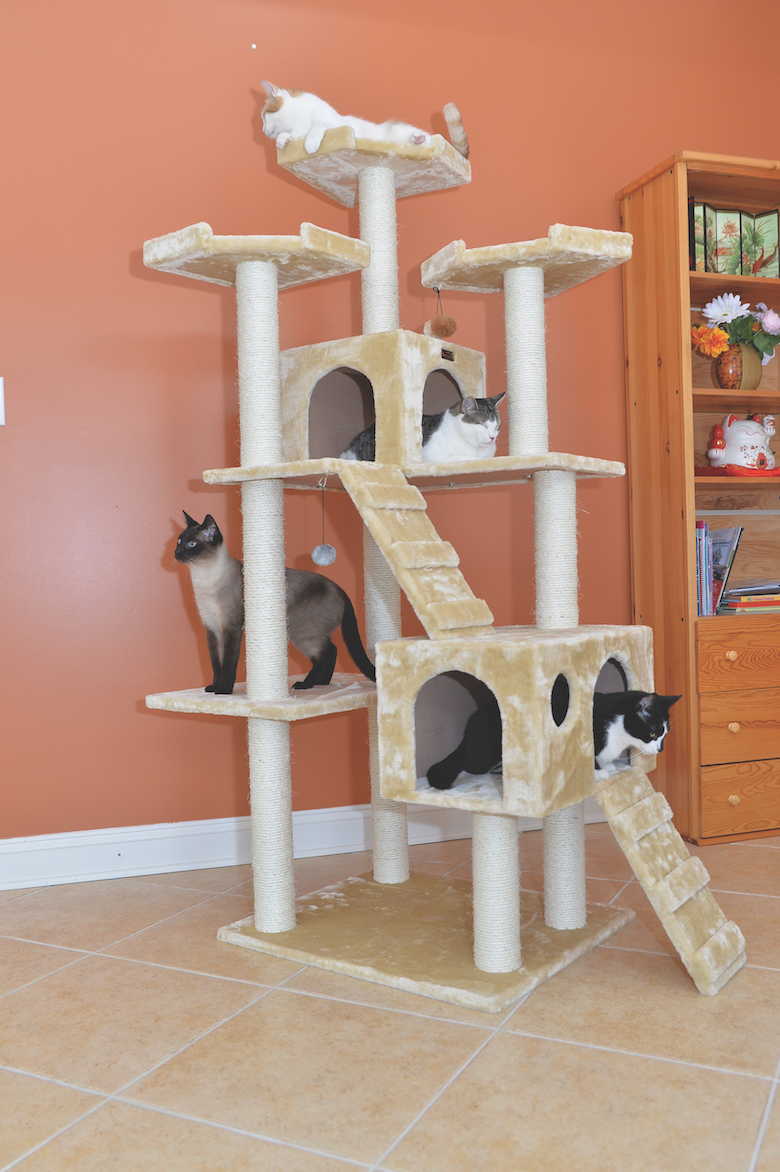
Encourage Tabby to climb with the Catville Tower from prevuepet.com ($299.99).
Get your cat exercise with climbing
Cats who roam outdoors love to climb trees and scale walls for a good vantage point. You can also give your indoor cat opportunities to climb. “Adding vertical spaces in the house such as a cat tree with multiple cat levels, or an outdoor play space “catio,” encourages exploration and jumping to different heights,” Dr. Sawyer says.
Tips to motivate your cat to climb:
- Get kitty a vertical climbing cat tree.
- Place cat stairs or ramps in front of beds or windowsills.
- Add cat shelves or catwalks to the upper spaces of your house.
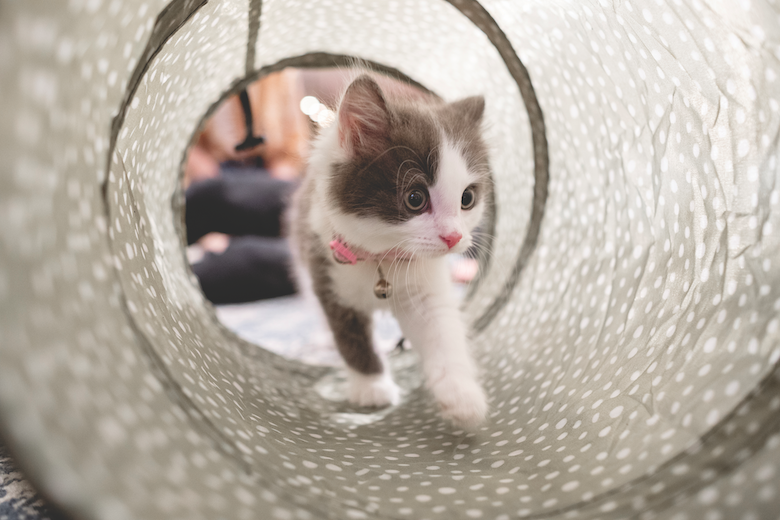
Photo: SolStock | Getty Images
Help your cat get more exercise by encouraging exploring
Cats are wired to explore, but if your home is always the same, your cat won’t express this natural active behavior.
“Indoor cats become intimately familiar with their environment and find little stimulation in exploring it,” Dr. Derr says. “If we don’t make a special effort to introduce new things on a regular basis, cats simply become bored.”
Tips to motivate your cat to explore:
- Rotate toys and place them in different areas throughout the house.
- Bring home new scratchers or towers and/or move existing ones to new places.
- Hide low-calorie treats, cat grass or catnip in different rooms for your cat to search out.
- Build a catio to include safe, outdoor space.
- Train your cat to use a harness and take him outside to explore or take him along in a cat-friendly back pack or stroller for some mental stimulation.
Have you cat hunt
In the wild, cats would expend a good deal of energy hunting for their food, but pet cats need only saunter over to the food dish to eat their fill (and then some). “We must recreate ways for a cat to be a cat,” Dr. Bales says. “Ditch the bowl and get your cat hunting for its food. Put small amounts of food in multiple hunting feeders and hide them around your house giving [your cats] back their natural drive to move.”
Dr. Derr likes food-dispensing toys and creating games around feeding time to encourage exercise. “Try scattering dry cat food in various locations around the house for the cat to stumble upon or hunt down,” she says. “Find a food toy so that when the cat bats the toy around, small amounts of food come out. Anything that makes a cat work or think for their food is a great idea.”
Tips to motivate your cat to hunt:
- Don’t feed out of the same old bowl. Use an enrichment/puzzle bowl or food tree.
- Hide dry food in different places throughout the house so your cat has to hunt for it. You can also do this with cat grass or catnip.
- Place kibble or treats in a food-dispensing toy where the cat needs to bat it around to get the food out.
If you implement these tips and find that your cat is still a couch potato, he might just be that way by nature. “Some activity level is determined by personality,” Dr. Derr says. “Laid-back cats are likely to respond differently than tightly wound cats. But there is always something you can do to help your cat exercise. It may take persistence and experimentation, but in the end your cat will appreciate it.”
The post Help Your Cat Exercise by Jackie Brown appeared first on Catster. Copying over entire articles infringes on copyright laws. You may not be aware of it, but all of these articles were assigned, contracted and paid for, so they aren't considered public domain. However, we appreciate that you like the article and would love it if you continued sharing just the first paragraph of an article, then linking out to the rest of the piece on Catster.com.
Jackie Brown